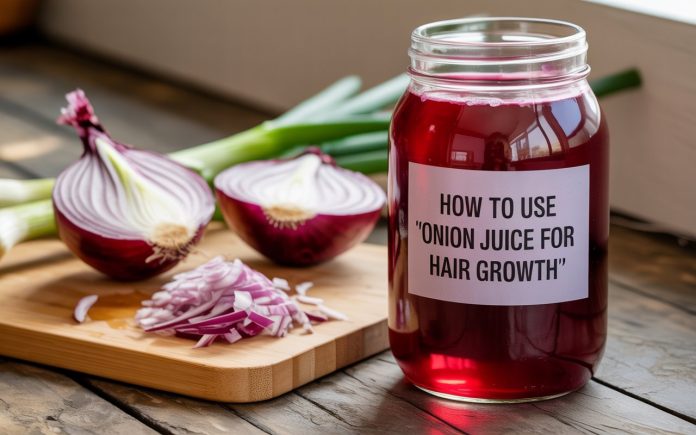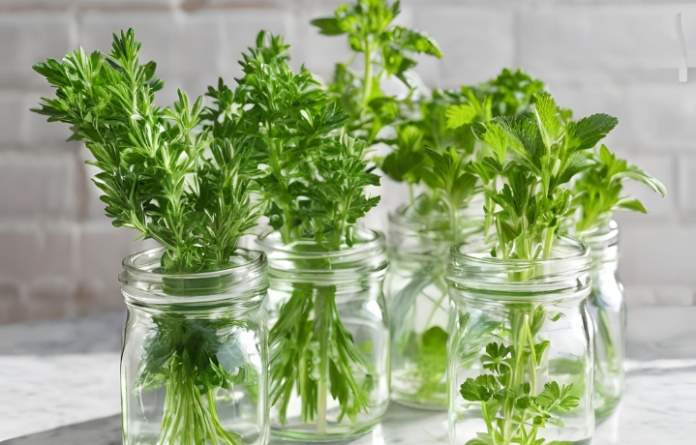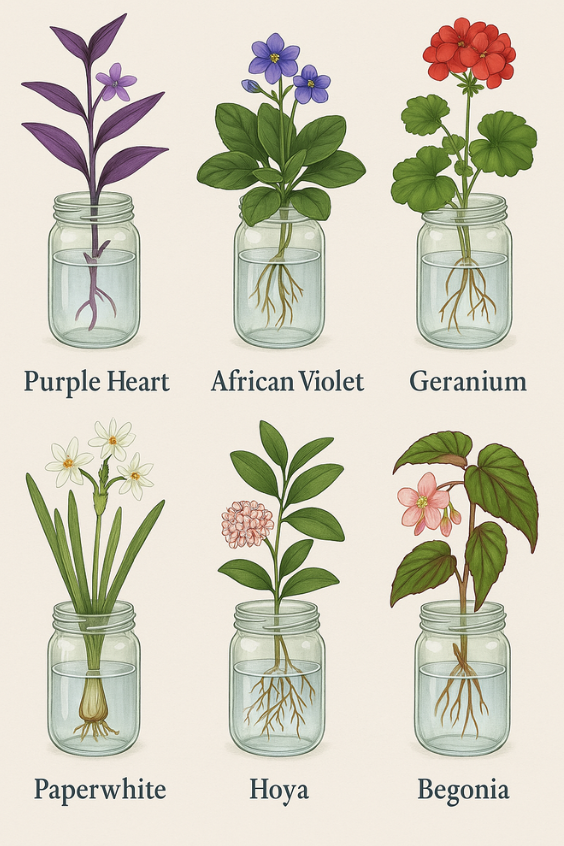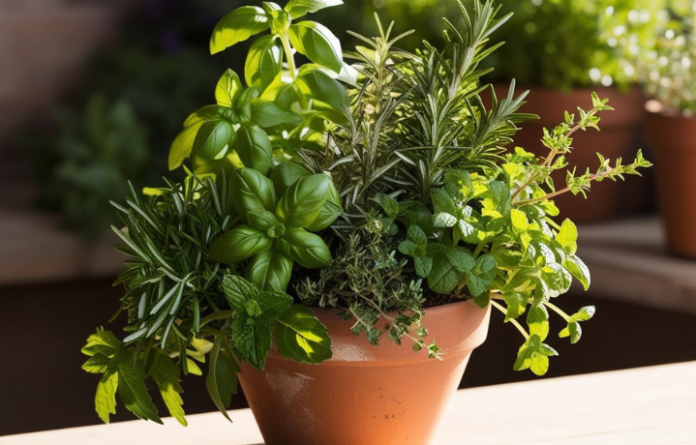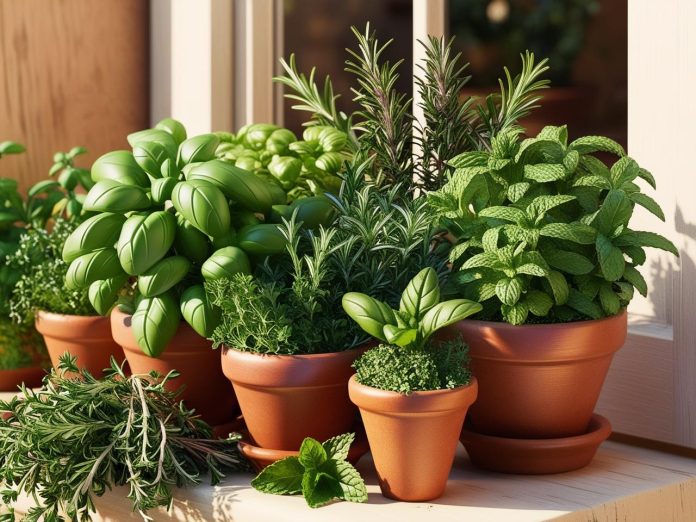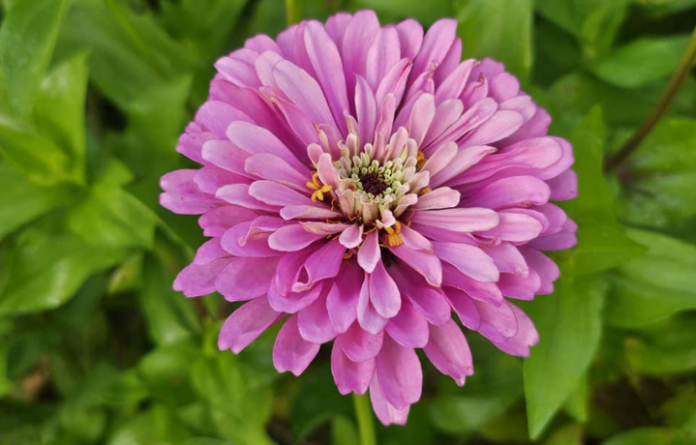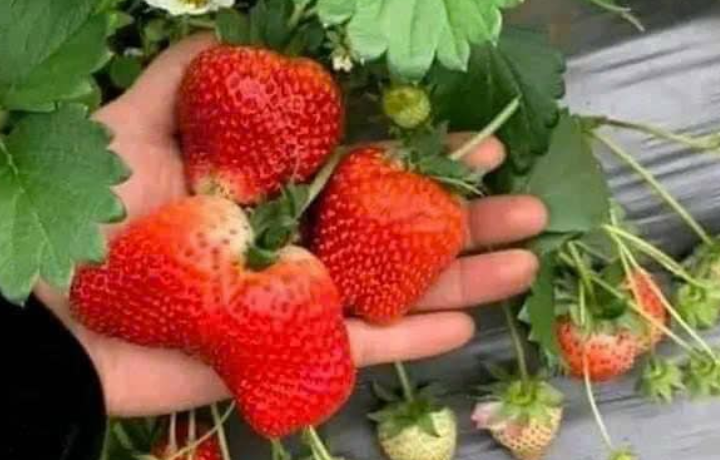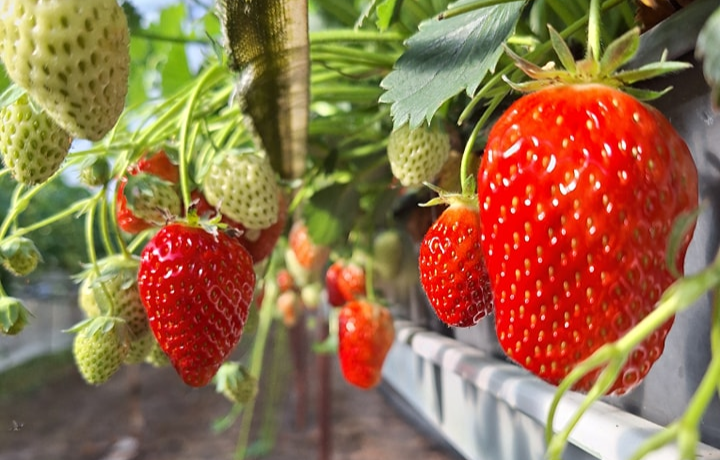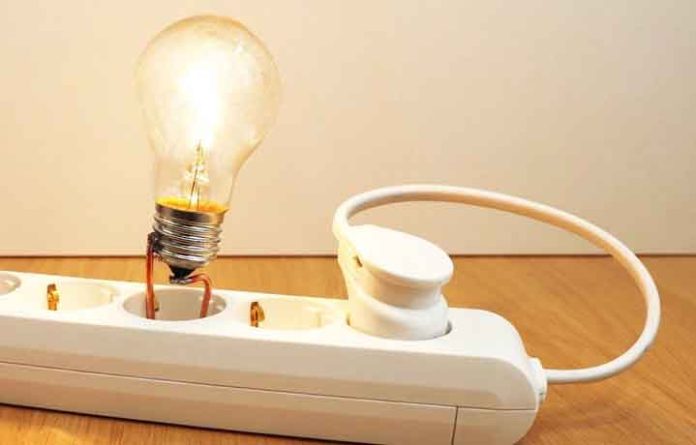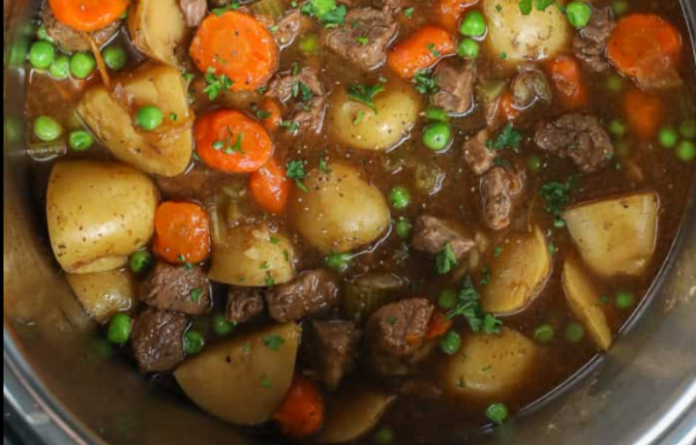Are you looking to spruce up your living space with a touch of green without breaking the bank? If so, then you’re in for a treat! Easy container gardening offers a fantastic way to indulge your inner gardener while keeping things budget-friendly and hassle-free. With the right tips and tricks, anyone can create a thriving garden on a balcony, patio, or even a small windowsill.
In this article, we’ll explore cheap and easy container gardening methods that not only make planting accessible but also allow you to enjoy the satisfaction of nurturing your very own plants. So, whether you’re a seasoned gardener or a complete novice, get ready to dig into the delightful world of container gardening and discover how simple it can be to cultivate beauty right at home.
Choosing the Right Containers for Your Budget-Friendly Garden
When it comes to starting a garden on a budget, choosing the right containers can make all the difference. Many might initially think that gardening requires expensive pots or elaborate planters, but in reality, there are plenty of cheap and easy container gardening options available. From repurposed household items to creatively painted buckets, you can cultivate a thriving garden without breaking the bank. By being resourceful and thinking outside the box, you can still achieve a beautiful landscape that meets your financial constraints.
One effective strategy for budget-friendly gardening is to look around your home for potential containers. Old tin cans, glass jars, or even unused kitchenware can provide a second life as planters. Not only does this approach save money, but it also adds a unique and personal touch to your garden. It’s important to ensure that your chosen containers have proper drainage to keep your plants healthy. Adding holes to the bottom of any recycled container is a simple fix that can prevent waterlogging and promote growth.
Another cost-effective option is to check local thrift stores or garage sales for inexpensive containers. Often, you can find pots that just need a little cleaning or can be revamped with a fresh coat of paint. This DIY approach not only contributes to a stylish outdoor space but also encourages creativity in your gardening projects. Moreover, consider grouping smaller containers together to create a visually appealing display, rather than investing in one large, costly planter.
Ultimately, embracing cheap and easy container gardening means being open to experimentation and creativity. The satisfaction of nurturing plants in unique containers can be equally rewarding as the harvest itself. With a little thought and resourcefulness, you can create a stunning garden on a budget, showcasing both your plants and your creative flair. Gardening should be accessible for everyone, and with the right choices, it can be a fulfilling endeavor that doesn’t strain your finances.
Low-Cost Soil Options for Your Container Garden
When it comes to container gardening, one of the most crucial aspects is choosing the right soil. However, you don’t have to break the bank to create a thriving garden. Low-cost soil options are readily available and can serve as a fantastic foundation for planting various herbs, vegetables, and flowers. Whether you’re an experienced gardener or a beginner looking to dive into cheap and easy container gardening, there are several budget-friendly solutions that can keep your garden flourishing without straining your finances.
One popular low-cost option is to create your own potting mix by combining various inexpensive materials. A mixture of garden soil, shredded leaves, and compost not only provides nutrients but also improves drainage. You can often find compost at local community gardens or through online classified ads, where neighbors may be eager to give away their homemade compost surplus. By using these everyday materials, gardeners can produce a rich, fertile soil mixture at a fraction of the cost of commercial potting soils.
Another excellent budget-friendly choice is utilizing coco coir, a fiber made from the husks of coconuts. This sustainable, biodegradable alternative is generally affordable, lightweight, and excellent for retaining moisture—perfect for container environments where watering might be needed more frequently. Mixing coco coir with garden soil or compost enhances the aeration and drainage properties of your potting mix, providing a balanced environment for your plant roots to thrive. This method of cheap and easy container gardening adds value to your gardening experience without a hefty price tag.
Lastly, consider repurposing materials you may already have around your home. Items like coffee grounds, egg shells, and even crushed cardboard can be worked into your container mix to add nutrients and enhance drainage. Not only does this practice keep costs down, but it also promotes recycling and sustainability in your gardening efforts. With a little creativity and effort, you can establish a thriving container garden that is both economical and environmentally friendly, demonstrating that gardening doesn’t have to be expensive to be enjoyable and productive.
Budget-Friendly Plant Selections for Easy Container Gardening
Container gardening is an excellent way for both novice and experienced gardeners to express their creativity without breaking the bank. For those looking to start a garden on a budget, selecting the right plants can make all the difference. Fortunately, there are numerous budget-friendly plant options available that not only thrive in containers but also add beauty and vibrancy to any space. With some strategic choices, you can enjoy the joys of cheap and easy container gardening while reaping the benefits of a flourishing green space.
One of the best options for affordable container plants is herbs. Varieties like basil, mint, and parsley are not only inexpensive but also put your culinary skills to good use. Growing herbs in containers allows you to keep them close to the kitchen for easy access, enhancing both your cooking and your garden. Additionally, many herbs are perennial, meaning you can enjoy them year after year with minimal investment required. Opting for a mix of different herbs can create a lush, aromatic garden that inspires creativity while providing a continuous supply of fresh flavors for your dishes.
Another fantastic choice for budget-conscious gardeners is annual flowers, such as marigolds and petunias. These vibrant blooms are often sold at very low prices in garden centers and can transform any container into a stunning focal point. By planting a variety of colors and sizes, you can create a visually appealing arrangement that attracts pollinators throughout the growing season. Annuals are also a great way to experiment with different plant combinations and layouts without committing long-term, giving you the flexibility to change things up on a whim.
For those interested in leafy greens and vegetables, consider varieties like lettuce, spinach, and radishes, which germinate quickly and are relatively cheap to grow from seeds. Growing your own greens not only offers financial savings but also provides the satisfaction of harvesting fresh produce right from your doorstep. With a little creativity, you can mix and match these plants in containers, creating a thriving mini-garden that decorates your space while supplying you with healthy ingredients for your meals. Ultimately, budget-friendly plant selections for easy container gardening allow everyone to experience the joy of gardening, regardless of their financial situation.
Simple Plant Care and Maintenance Tricks for Your Garden

Caring for plants in your garden doesn’t have to be a complex or costly endeavor. With a few simple tricks, you can keep your plants healthy and thriving, all while enjoying the process. One of the most effective methods is to establish a consistent watering routine. Plants tend to thrive on predictability, so watering them at the same time each day or every few days can help ensure they receive the moisture they need. It’s crucial to check the soil before watering; if it feels dry an inch or so below the surface, it’s time for a drink. This will prevent overwatering, which can lead to root rot and other issues.
Another easy way to maintain your garden is through the practice of mulching. Adding a layer of mulch around your plants can help retain moisture, suppress weeds, and improve soil health over time. Organic mulches, such as shredded bark, straw, or grass clippings, not only serve these purposes but also eventually break down and enrich the soil. This simple technique can save you both time and effort in the long run, allowing you to spend less time weeding and more time enjoying your blossoming garden.
For those looking to expand their plant collection without breaking the bank, cheap and easy container gardening can be a great option. Utilizing recycled containers such as old buckets, tin cans, or even wooden crates can provide a unique aesthetic while serving as functional planters. Ensure that whatever container you choose has drainage holes, as this will help prevent waterlogging. Container gardening also allows for greater flexibility in design, enabling you to rearrange or relocate your plants as seasons change or as your preferences evolve.
Lastly, don’t forget the benefits of companion planting. Certain plants naturally deter pests or promote the growth of their neighbors. For instance, mixing marigolds with your vegetables can help keep harmful insects at bay. This age-old gardening method not only fosters a healthier garden environment but also enhances the output of your plants. By incorporating these simple care techniques and embracing container gardening, you can cultivate a vibrant and productive garden, all while enjoying the journey.
Upcycling Ideas for Cheap and Creative Container Solutions
Upcycling has become a popular initiative for those looking to be more sustainable while also expressing their creativity. One area where this shines is in container gardening. By transforming everyday items into plant pots, you not only save money but also give a unique touch to your garden. There are countless items around the house that can be repurposed as planters, making it a fun and economical way to engage in cheap and easy container gardening.
Consider using old buckets, tin cans, or even broken pottery. With a little paint and some drainage holes, these can be turned into charming plant containers that add personality to your space. Old shoes, especially those with a bit of character, can become quirky planters. Just imagine a row of colorful high-tops lined with blooming flowers on your patio! The best part about these upcycled creations is that they can be completely personalized with vibrant colors, patterns, or textures that complement your garden’s aesthetics.
Another fantastic upcycling idea is to utilize wooden pallets or crates. These can be stacked for vertical gardening, or you can divide them into smaller sections for a unique herb garden. Simply attach landscape fabric to the back of the pallets to hold soil while allowing for proper drainage. This not only adds height and dimension to your gardening area but also highlights your creative flair. For a touch of elegance, consider sealing the wood and adding a coat of varnish, which enhances durability while showcasing the natural beauty of the wood grain.
Finally, don’t underestimate the power of glass jars or bottles. Immensely popular for small plants, they provide an eye-catching display while being completely functional. From mason jars to wine bottles, you can create a delightful indoor garden that can thrive on a windowsill. Remember, the possibilities are endless with upcycling. Embrace your creativity and explore cheap and easy container gardening options that not only beautify your space but also contribute to a sustainable lifestyle.
Watering and Fertilizing Tips to Keep Your Container Garden Thriving
Container gardening offers a fantastic way to enjoy a variety of plants, even in limited spaces. However, to ensure that your flora thrives, proper watering and fertilizing techniques are essential. One of the most important aspects of plant care is understanding the unique needs of your container garden. Containers can dry out more quickly than traditional garden beds, so it’s vital to monitor moisture levels closely. A general rule of thumb is to check the soil daily; if the top inch feels dry, it’s time to water. Using a moisture meter can also help you gauge when to water accurately, preventing over or under-watering.
When it comes to fertilizing, it’s crucial to choose the right type for your container plants. Many commercially available fertilizers come in easy-to-use formats, such as granules or liquid concentrates. For those looking for a more organic approach, compost tea or worm castings can provide necessary nutrients without harsh chemicals. Apply a balanced, slow-release fertilizer to maintain consistent nourishment; this is especially important for plants in containers, as they may deplete nutrients more rapidly than those in the ground. Remember, it’s easy to overdo it—always follow the manufacturer’s instructions to avoid burning your plants.
In the spirit of cheap and easy container gardening, consider utilizing homemade solutions for both watering and fertilizing. Rainwater collection can be a sustainable way to water your garden, and homemade compost can serve as a free, nutrient-rich fertilizer. Simply set up a rain barrel to collect water, and mix kitchen scraps and yard waste to create your compost. Not only does this reduce waste, but it also saves you money and provides your plants with essential nutrients.
With the right care strategies, you can keep your container garden thriving throughout the growing season. By paying attention to watering frequency and implementing effective fertilization methods, you’ll cultivate a vibrant garden that flourishes in any space. Whether you’re growing herbs on a balcony or flowers in a small yard, these tips will help you enjoy the benefits of container gardening while keeping it both economical and easy.
Maximizing Space in Your Small-Scale budget-friendly Container Garden
A small-scale container garden can flourish beautifully if you maximize your space creatively. Start by thinking vertically. Wall planters, hanging baskets, and trellises can transform unused vertical areas into productive growing spaces. Climbing plants like peas, beans, or cucumbers thrive when given the chance to grow upwards.
Consider using stackable planters or tiered shelving units to create layers of greenery. These allow you to grow more plants in a compact footprint, making the most of every inch. For added flexibility, choose lightweight containers that can be rearranged easily as your needs change.
Opt for containers that fit well into corners or other overlooked spaces. Square or rectangular pots are often more space-efficient than round ones and can be placed tightly together. Don’t forget about railings and fences, which can hold planters and add extra room for your garden.
When selecting plants, focus on varieties that thrive in small spaces. Dwarf tomatoes, mini bell peppers, and herbs like parsley or thyme are perfect for container gardening. Mixing plants with similar water and sunlight needs in a single container can also save space and simplify care.
Succession planting is a game-changer for small gardens. After harvesting a crop, replant the same container with a new batch of seeds or plants to keep your garden productive throughout the growing season.
Use reflective surfaces like mirrors or light-colored walls to bounce light around your garden, making the space feel larger and brighter. This trick is especially useful for shaded or indoor container gardens.
Self-watering containers are another great investment, as they allow closer planting without worrying about inconsistent watering. They also save time and help your garden thrive.
If you’re growing edible plants, try companion planting to make the most of your containers. For example, pair lettuce with carrots or grow basil alongside tomatoes to maximize yields in a shared space.
A minimalist approach can help keep your garden organized. Fewer, well-maintained containers can sometimes be more effective than an overcrowded space. Prune regularly and remove spent plants to keep your garden tidy and thriving.
With some creativity and strategic planning, even the smallest container garden can become a lush, productive, and beautiful space. By maximizing every bit of room, you’ll create a garden that’s both functional and inspiring.
Pest Control on a Budget: Natural Solutions for Healthy Plants

Keeping your plants healthy and pest-free doesn’t have to be expensive. With natural, budget-friendly solutions, you can protect your garden without harming the environment. One of the easiest methods is using homemade sprays. A simple mixture of water, mild dish soap, and a few drops of neem oil can effectively deter common pests like aphids and mites.
Another option is introducing beneficial insects to your garden. Ladybugs, lacewings, and praying mantises are natural predators that help keep pest populations under control. You can attract them by planting flowers like marigolds, dill, or fennel, which provide shelter and nectar.
Companion planting is another effective strategy. Certain plants, like basil and marigolds, naturally repel pests when grown alongside vegetables. For instance, planting garlic near roses can help deter aphids, while nasturtiums work well against whiteflies and caterpillars.
Diatomaceous earth is an inexpensive, natural substance that creates a barrier against crawling pests like slugs and beetles. Sprinkle it around your plants to keep unwanted visitors at bay. Similarly, crushed eggshells not only deter pests but also enrich the soil with calcium as they break down.
Creating physical barriers can be a game changer for pest control. Use fine mesh netting or lightweight row covers to protect your plants from insects and birds. This approach is particularly useful for vegetable gardens.
Maintaining a clean and healthy garden environment is crucial. Remove dead leaves, weeds, and plant debris regularly to eliminate hiding spots for pests. Mulching with organic materials, like straw or wood chips, can also help suppress weeds and reduce pest habitats.
Handpicking pests may seem tedious, but it’s a highly effective and cost-free method for small-scale gardens. Inspect your plants daily and remove any visible pests, such as caterpillars or beetles, by hand.
For fungal issues and mildew, homemade remedies like a baking soda spray can work wonders. Mix one tablespoon of baking soda with a gallon of water and a few drops of dish soap for a natural fungicide.
Lastly, encourage birds to visit your garden by providing feeders or birdbaths. Birds are excellent at controlling insects, especially caterpillars and grubs. A thriving bird population can significantly reduce the need for chemical interventions.
By incorporating these natural, budget-friendly pest control methods, you’ll cultivate a thriving, healthy garden that’s free from harmful chemicals and unnecessary expenses.
Harvesting Your Own Produce from an Affordable Container Garden
Growing your own food in a container garden is not only budget-friendly but also incredibly rewarding. Even with limited space and resources, you can enjoy fresh, homegrown produce right from your patio, balcony, or windowsill. The key is to choose containers that suit your space and needs. Repurposed buckets, crates, or old pots can be transformed into perfect homes for your plants.
Start by selecting easy-to-grow vegetables and herbs. Leafy greens like spinach, lettuce, and arugula thrive in shallow containers and can be harvested multiple times throughout the season. Herbs such as basil, cilantro, and chives are compact and can grow happily on a sunny windowsill or balcony.
Tomatoes, peppers, and bush beans are also excellent choices for container gardens. These crops provide bountiful harvests with proper care and are perfect for small spaces. Make sure to select varieties labeled as “determinate” or “dwarf” for the best results in containers.
Soil quality plays a vital role in your garden’s success. Invest in a good-quality potting mix, or create your own by combining compost, coconut coir, and perlite for excellent drainage and nutrients. Enriching the soil with kitchen scraps or homemade compost can further reduce costs while nourishing your plants.
Watering is another crucial factor. Container plants tend to dry out quickly, so regular watering is essential. Adding a layer of mulch on top of the soil can help retain moisture and reduce the frequency of watering. Self-watering containers are also a great investment for those with busy schedules.
Fertilization doesn’t have to be expensive. Organic options like diluted compost tea, fish emulsion, or banana peels soaked in water can provide the nutrients your plants need to thrive. Regular feeding ensures healthy growth and abundant harvests.
When it’s time to harvest, pick your produce in the morning when it’s at its freshest. Harvesting regularly encourages plants like beans, peppers, and herbs to produce more over time. For leafy greens, use a cut-and-come-again method to enjoy multiple harvests from the same plant.
Maximize your yields by practicing succession planting. Once a crop is harvested, replant the container with another fast-growing vegetable or herb to keep your garden productive year-round.
Container gardening also allows you to grow year-round with the help of indoor setups or cold frames. During the colder months, bring your pots inside to extend the growing season and continue harvesting.
By embracing an affordable container garden, you not only save money on groceries but also enjoy the satisfaction of growing your own food. It’s a sustainable, healthy, and deeply fulfilling way to make the most of your space and resources.
Harvesting Your Own Produce from an Affordable Container Garden
Growing your own food in a container garden is not only budget-friendly but also incredibly rewarding. Even with limited space and resources, you can enjoy fresh, homegrown produce right from your patio, balcony, or windowsill. The key is to choose containers that suit your space and needs. Repurposed buckets, crates, or old pots can be transformed into perfect homes for your plants.
Start by selecting easy-to-grow vegetables and herbs. Leafy greens like spinach, lettuce, and arugula thrive in shallow containers and can be harvested multiple times throughout the season. Herbs such as basil, cilantro, and chives are compact and can grow happily on a sunny windowsill or balcony.
Tomatoes, peppers, and bush beans are also excellent choices for container gardens. These crops provide bountiful harvests with proper care and are perfect for small spaces. Make sure to select varieties labeled as “determinate” or “dwarf” for the best results in containers.
Soil quality plays a vital role in your garden’s success. Invest in a good-quality potting mix, or create your own by combining compost, coconut coir, and perlite for excellent drainage and nutrients. Enriching the soil with kitchen scraps or homemade compost can further reduce costs while nourishing your plants.
Watering is another crucial factor. Container plants tend to dry out quickly, so regular watering is essential. Adding a layer of mulch on top of the soil can help retain moisture and reduce the frequency of watering. Self-watering containers are also a great investment for those with busy schedules.
Fertilization doesn’t have to be expensive. Organic options like diluted compost tea, fish emulsion, or banana peels soaked in water can provide the nutrients your plants need to thrive. Regular feeding ensures healthy growth and abundant harvests.
When it’s time to harvest, pick your produce in the morning when it’s at its freshest. Harvesting regularly encourages plants like beans, peppers, and herbs to produce more over time. For leafy greens, use a cut-and-come-again method to enjoy multiple harvests from the same plant.
Maximize your yields by practicing succession planting. Once a crop is harvested, replant the container with another fast-growing vegetable or herb to keep your garden productive year-round.
Container gardening also allows you to grow year-round with the help of indoor setups or cold frames. During the colder months, bring your pots inside to extend the growing season and continue harvesting.
By embracing an affordable container garden, you not only save money on groceries but also enjoy the satisfaction of growing your own food. It’s a sustainable, healthy, and deeply fulfilling way to make the most of your space and resources.
Budget-Friendly Container Gardening: Bringing Beauty to Your Outdoor Space

Creating a stunning outdoor space doesn’t have to break the bank. With a little creativity and some budget-friendly strategies, you can transform your balcony, patio, or backyard into a beautiful oasis using container gardening. Start by repurposing items you already have at home. Old buckets, tins, baskets, or even broken teapots can serve as unique and charming planters.
Thrift stores and yard sales are treasure troves for affordable pots and containers. With a bit of paint or decorative touches, you can give them a fresh look that matches your garden’s aesthetic. For a cohesive design, try painting all your containers in similar tones or patterns.
Budget-conscious gardeners often grow from seeds or cuttings rather than buying full-grown plants. Seeds are inexpensive and can yield multiple plants, while cuttings from friends or neighbors are a cost-free way to expand your garden.
Focus on hardy, low-maintenance plants like succulents, marigolds, or petunias that thrive in containers and don’t require constant attention. Mixing flowers with herbs or leafy greens can create both a functional and decorative space.
To save money on soil, consider making your own potting mix by combining compost, sand, and garden soil. You can also fill the bottom of large containers with lightweight materials like plastic bottles or pine cones before adding soil to reduce the amount needed.
Maximize your garden’s beauty by layering plants with different heights and textures. Tall plants like grasses or sunflowers can add vertical interest, while trailing plants such as ivy or sweet potato vines create a cascading effect.
Lighting is another way to enhance the charm of your container garden. Use inexpensive solar lights, string lights, or lanterns to add a cozy glow during the evening. These options are energy-efficient and easy to install.
Don’t forget to incorporate personal touches to make your garden uniquely yours. Handmade signs, colorful pebbles, or DIY wind chimes can bring character to the space without costing much.
Containers can be grouped creatively for impact. Arrange them in clusters of different sizes and shapes to create depth and visual interest. Using plant stands or crates can add height and dimension to your display.
Finally, consider adding a focal point like a DIY water feature or a statement plant in a bold pot. These elements draw attention and tie the design together, making your container garden feel complete and polished.
With a bit of ingenuity and resourcefulness, you can enjoy a lush and vibrant outdoor space that reflects your style while staying well within your budget.
Conclusion
Maximizing space in your small-scale container garden is all about creativity, strategic planning, and making the most of what you have. By incorporating vertical gardening, compact plant varieties, and smart layouts, you can transform even the tiniest area into a lush, productive haven.
Whether you’re growing flowers for beauty or herbs and vegetables for your kitchen, a small-scale container garden can deliver big rewards. Embrace these tips and enjoy the satisfaction of a thriving garden, no matter the size of your space!

